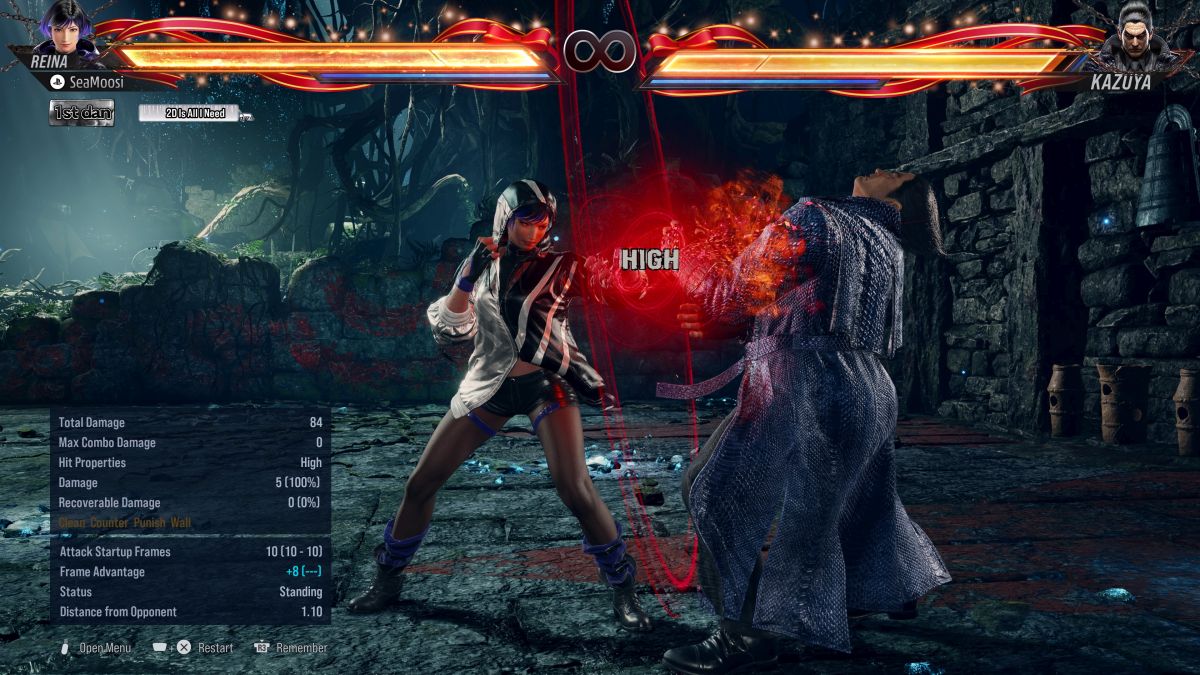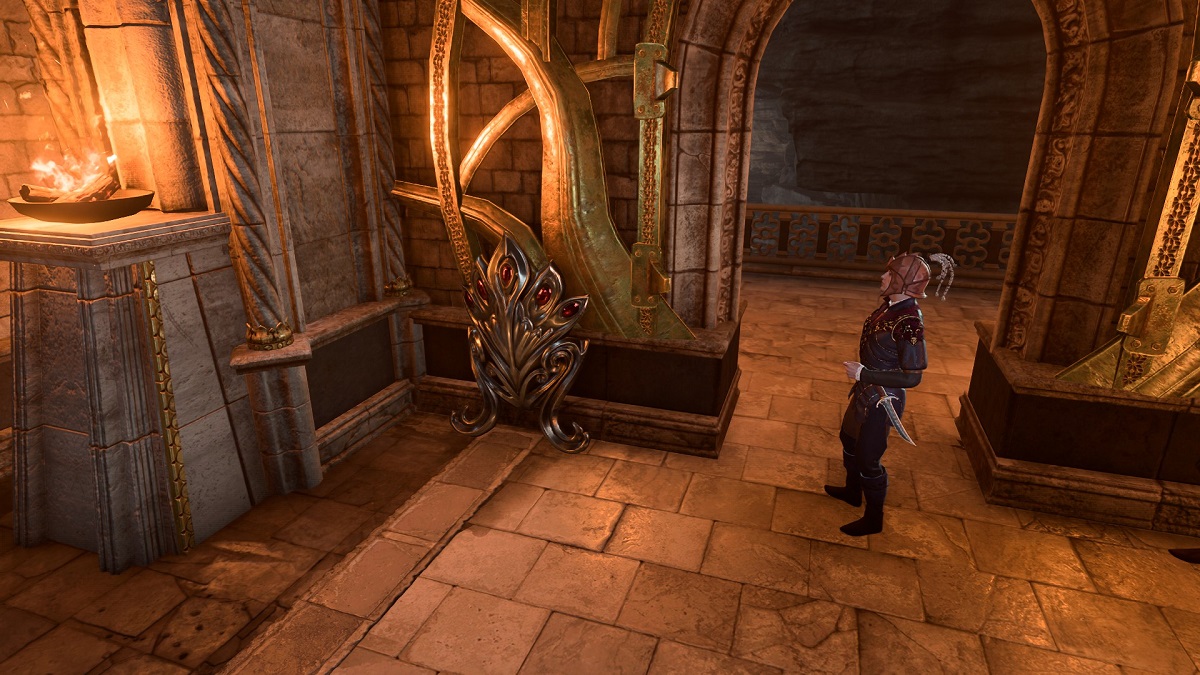So you’re playing a lot of Tekken 8. You’ve put some time into the cast, maybe picked out a main, and now you want to go learn some sick combos to run in the practice room. Problem is, how do you read it? Move notation in Tekken 8 is deceptively simple, but that doesn’t mean everyone can learn it right away.
Especially considering that you might be coming from another fighting game scene with its own style for move notations, having a handy guide is helpful for learning the basics. And that’s what this is: a short little explainer on how move notation works in Tekken 8.

The basics
Tekken 8, and Tekken on the whole, is a four-button game. (Well, outside of the tag button.) Bandai Namco’s series boils fighting down to some simple basics: right and left punch, right and left kick. If you’re looking at a PlayStation controller, that maps to Square for Left Punch and Triangle for Right Punch, with Cross and Circle mirroring positions for kicks.
But these obviously don’t cover the gamut of controller options, nor is “down-forward Square” a particularly wieldy shorthand; heck, as an arcade game, you’re mostly just working with a square set of buttons. So the broadly accepted Tekken notation is:
- 1 – Left Punch (PS Square, Xbox X, Arcade top-left)
- 2 – Right Punch (PS Triangle, Xbox Y, Arcade top-right)
- 3 – Left Kick (PS Cross, Xbox A, Arcade bottom-left)
- 4 – Right Kick (PS Circle, Xbox B, Arcade bottom-right)
If you need an additional visual to help solidify your learning, then the artists at Destructoid (read: me) and Wide Kazuya are here to help too.

Knowing directions is also important. Unlike anime fighters that use numpad notation, Tekken usually (usually) has directional inputs as alphabetical letters. Additionally, a lowercase means tap, while an uppercase means hold. So in practice, this looks like:
- u – Tap up
- U – Hold up
- d – Tap down
- D – Hold down
- b – Tap back
- B – Hold back
- f – Tap forward
- F – Hold forward
A few additional commands to know, depending on your character:
- N – Neutral (the stick or thumb not pressing any direction)
- SS – Sidestep (with SSR or SSL indicating direction)
- WS – While Standing
- WR – While Running
- FC – Full Crouch (in a full crouching position)
And lastly, some serial directional inputs on the stick or D-pad for good measure:
- QCF – Quarter Circle Forward (from the down position “rolling” to forward, like you’re turning a key counterclockwise)
- QCB – Quarter Circle Back
- HCF – Half Circle Forward (From back to down to forward in one smooth, half-circle motion)
- HCB – Half Circle Back
Reading the move notations in-game in Tekken 8
Now, you may have noticed this differs a bit in-game. Inside the client, Tekken 8 uses buttons as a handy shortcut rather than numbers, which is a helpful visual indicator.

However, there are a few alternatives that Tekken uses for directional inputs. Namely, those arrows: a white arrow and black arrow. What they mean is:
- White arrow – Quickly press a directional button (i.e. tap)
- Black arrow – Press and hold down a directional button (i.e. hold)
- Star – Return the directional button to neutral (no input, i.e. neutral)
It’s actually quite helpful visually, to see the directions with arrows and buttons rather than have to translate it in your mind’s eye. But if you read combos online, on a forum or discussion board, you’re probably going to see a lot of numerical and alphabetical notation, rather than graphical.
When can I hit buttons?
Hold on, partner, we’re not done yet. Now you know basic inputs, but if you’re looking at a combo, that also means knowing when to push the buttons in sequence.
Part of learning this is just feeling out the cadence of hits. The practice mode combo challenges in Tekken 8 provide a great starting point; with the percussive beats in the demo mode, you can literally hear what the button presses should sound like in rhythm.
For online combo-posting, there are a few shorthands:
- , (comma) – Separate moves (shorthand for breaking up individual moves)
- + (plus) – Press both (i.e. 1+2 would see you hit 1 and 2 at the same time)
- ~ (tilde) – “Sweep” both (i.e. 4~3 would be a swift, sweeping motion across the 4 and 3 buttons)
- < (greater than) – Delay the next move (an optional stutter)
- _ (underscore) – Or
- * (asterisk) – Hold the button (i.e. *2 means hold 2)
- : (colon) – a “just frame” input, which requires incredibly specific frame timing
In Tekken 8, the system will note some of these graphically, like showing both 1 and 2 pressed for a 1+2 command. The brackets [ ] indicate the swift, immediate succession of inputs that you’d see in a ~ input.

Put all the Tekken notation together
Okay, congratulations. You’ve learned the basics. You should now know enough about Tekken 8 combos to read 1, 1, F2, 1+2 and know what that means.
Granted, there’s still a wealth of additional info to seek out there. Characters have stances, usually abbreviated down, that require their own special notation. And even common inputs, like the Electric Wind God Fist, get abbreviated for ease of interpretation to “ewgf”.
These inputs have been built up over years and years of playing and sharing info online, through forums like Tekken Zaibatsu that have since been recorded for posterity through various WordPresses and community forums, all of which were crucial for preserving the info here.
Hopefully, this helps you learn some more killer combos online, and also participate in the communities that share this knowledge around. At the very least, it should help you master some new combos to throw at your next ranked opponent.





Published: Jan 31, 2024 12:23 pm